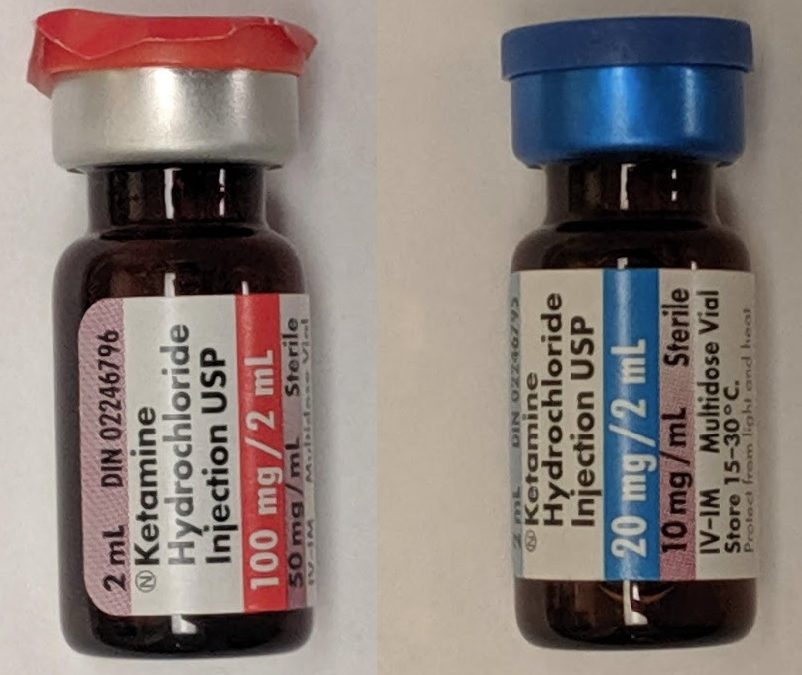Methodology: 3.5/5
Usefulness: 3.5/5
Question and methods: The goal of this study was to assess the analgesic efficacy and safety profile of low dose ketamine in the prehospital setting as it compares to morphine. This was a prospective cluster-randomized (unblinded) trial completed in Vietnam.
Findings: There was a trend to improved analgesia in the subjects randomized to receive ketamine compared to morphine with a difference in the visual analogue scale (VAS) score of -3.5 compared to -3.1 points (95% CI for a difference of -0.8 to -0.09). None of the adverse events analysed met statistical significance, however nausea and vomiting were seen more often in the morphine group (19% vs 5% with CI 95% for a difference of 8-22%) and agitation was more common with ketamine (11% vs 1.5% with CI 95% for a difference of 4-16%). Other trends seen among subjects receiving ketamine include a larger improvement in final sBP among hypotensive subjects and a small number of subjects experienced excessive salivation. In addition, the use of ketamine was not found to have a significant effect on the final level of consciousness among those with concern for brain injury.
Limitations: Overall the study appears to have been well run, however I have some doubts about its generalizability to our context given the difference in training of prehospital providers in Vietnam compared to Canada as well as the average transit time for the subjects in the study being over 2 hours. In addition, there are significant risks for bias related to the lack of blinding of prehospital clinicians, especially given the subjectivity of the VAS reported as the primary outcome. The outcomes are not all patient-focused with a notable absence of self-reported pain scores and no long-term outcome data available. Finally, despite the efforts made to calculate sample size prior to study initiation, it was unable to reach statistical significance for any of the outcomes of interest.
Bottom Line: This publication is a great step towards the evaluation of ketamine for analgesia in the prehospital setting, especially since it’s the first prospective study of its kind. There is signal that ketamine may be more effective than morphine for analgesia with an excellent respiratory and hemodynamic safety profile. The main risks identified, which differ from those seen with morphine use, include agitation and hypersalivation. Further studies with larger sample size and improved blinding will be required to confirm these findings.
Author: Dr. Sara-Pier Piscopo
For a review of ketamine use for analgesia in the ED, check-out this Archived Journal Club review: A Systematic Review and Meta-analysis of Ketamine as an Alternative to Opioids for Acute Pain in the Emergency Department

